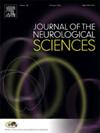HIV-associated neurocognitive disorders (HAND): Optimal diagnosis, antiviral therapy, pharmacological treatment, management, and future scopes
IF 3.6
3区 医学
Q1 CLINICAL NEUROLOGY
引用次数: 0
Abstract
In the context of HIV infection, HIV-associated neurocognitive disorders (HAND) have become a serious concern. An extensive summary of the diagnosis, care, and mental health consequences related to HAND is given in this article. The diagnosis of HAND entails a multimodal approach that includes neuroimaging, cognition tests, and clinical examinations. Numerous screening instruments and standardized evaluations have been created to support the early identification and tracking of HAND. Appropriate actions and individualized treatment plans are made possible by prompt diagnosis. A multidisciplinary approach is used in the treatment of HAND, aiming to address various elements of cognitive impairment. The main stream of treatment is still antiretroviral medication (ART), which successfully lowers viral loads and stops further neurocognitive deterioration. Adjunctive treatments are essential for treating cognitive symptoms and improving overall quality of life. These therapies include cognitive rehabilitation, pharmaceutical interventions, and psychological support. Our knowledge of the pathophysiology of HAND has improved with the identification of the inflammatory milieu and persistent viral persistence in the central nervous system (CNS), which has also aided in the creation of biomarkers for CNS illness. Although biomarkers show inflammation, neuronal damage, and monocyte activity, their clinical use is still restricted. Although new techniques to treating HAND have been developed as a result of a better knowledge of pathogenic processes, the best course of action is still unknown.

艾滋病相关神经认知障碍(HAND):最佳诊断、抗病毒治疗、药物治疗、管理和未来展望。
本文章由计算机程序翻译,如有差异,请以英文原文为准。
求助全文
约1分钟内获得全文
求助全文
来源期刊

Journal of the Neurological Sciences
医学-临床神经学
CiteScore
7.60
自引率
2.30%
发文量
313
审稿时长
22 days
期刊介绍:
The Journal of the Neurological Sciences provides a medium for the prompt publication of original articles in neurology and neuroscience from around the world. JNS places special emphasis on articles that: 1) provide guidance to clinicians around the world (Best Practices, Global Neurology); 2) report cutting-edge science related to neurology (Basic and Translational Sciences); 3) educate readers about relevant and practical clinical outcomes in neurology (Outcomes Research); and 4) summarize or editorialize the current state of the literature (Reviews, Commentaries, and Editorials).
JNS accepts most types of manuscripts for consideration including original research papers, short communications, reviews, book reviews, letters to the Editor, opinions and editorials. Topics considered will be from neurology-related fields that are of interest to practicing physicians around the world. Examples include neuromuscular diseases, demyelination, atrophies, dementia, neoplasms, infections, epilepsies, disturbances of consciousness, stroke and cerebral circulation, growth and development, plasticity and intermediary metabolism.
 求助内容:
求助内容: 应助结果提醒方式:
应助结果提醒方式:


